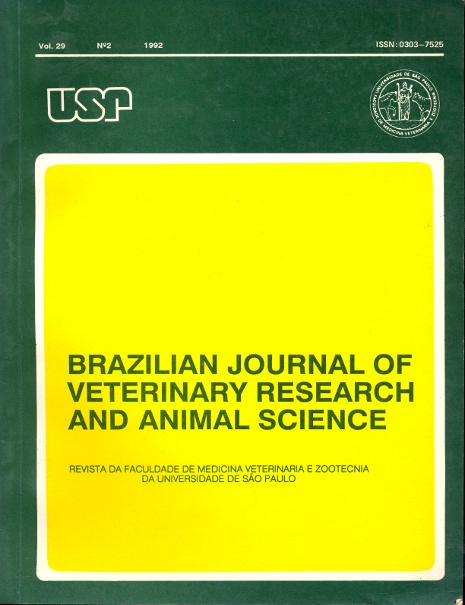Diagnostic aspects of dermalophytoses and superficial mycoses of dogs and cats
DOI:
https://doi.org/10.11606/issn.1678-4456.bjvras.1992.51994Keywords:
Dermatomycoses of dogs, Dermatomycoses of cats, Microsporum, Tricophyton, DiagnosisAbstract
For the diagnosis of superficial mycoses, the clinical aspects and cultivation of fungi for further identification are usually considered. Identification, however, is time consuming and at least 4 weeks are needed for a positive laboratory report. In Brazil, the use of Wood’s light is not a routine screen test, especially in Veterinary Medicine. Thus, the present paper has the aim to evaluate the availability, the sensitivity and the specificity of the Wood's light in detecting fungal diseases because not all dermatomycoses are readily detected by this method. The fluorescence results were compared to those of fungi cultures of hair specimens from animals suspected of dermatophytes or yeast infections. The culture media used were the Sabouraud and the Mycose I Agar. From February 1989 to April 1990 the Dermatology Service of the University Veterinary Teaching Hospital attended 282 animals presenting lesions very suggestive of fungal diseases. From these, 162 (57.4%) were dogs and the remaining 120 (42.5%) were cats, of both sexes and of various ages and breeds. After performing dermatologie examination, the lesions were submitted to the Wood's light (250 nm) and fluorescence was observed in 70 (24.5%) cases. After the inoculation and in vitro cultivation of clinical specimens from either fluorescent and non-fluorescent lesions, positive fungal growth was found in 109 cases, 103 of these identified as dermatophytes or pathogenic yeast. The clear fluorescence was found only in Microsporum canis infection. The results of fluorescence and fungal growth were in accordance in 64.5% of the cases. The efficiency of the Wood's light in dogs and cats, compared to the mycological examination was respectively: sensitivity - 39.1% and 73.8%; specificity - 89.2% and 80.7%; possibility of diagnosis - 82.0% and 78.0%; predictable value of positive test - 37.5% and 67.3%; and predictable value of negative test - 89.8% and 85.1%. Epidemiologic aspects of dermalophytoses and yeast infections and fungi species isolated in cultures are furthermore discussed.
Downloads
Downloads
Published
Issue
Section
License
The journal content is authorized under the Creative Commons BY-NC-SA license (summary of the license: https://





